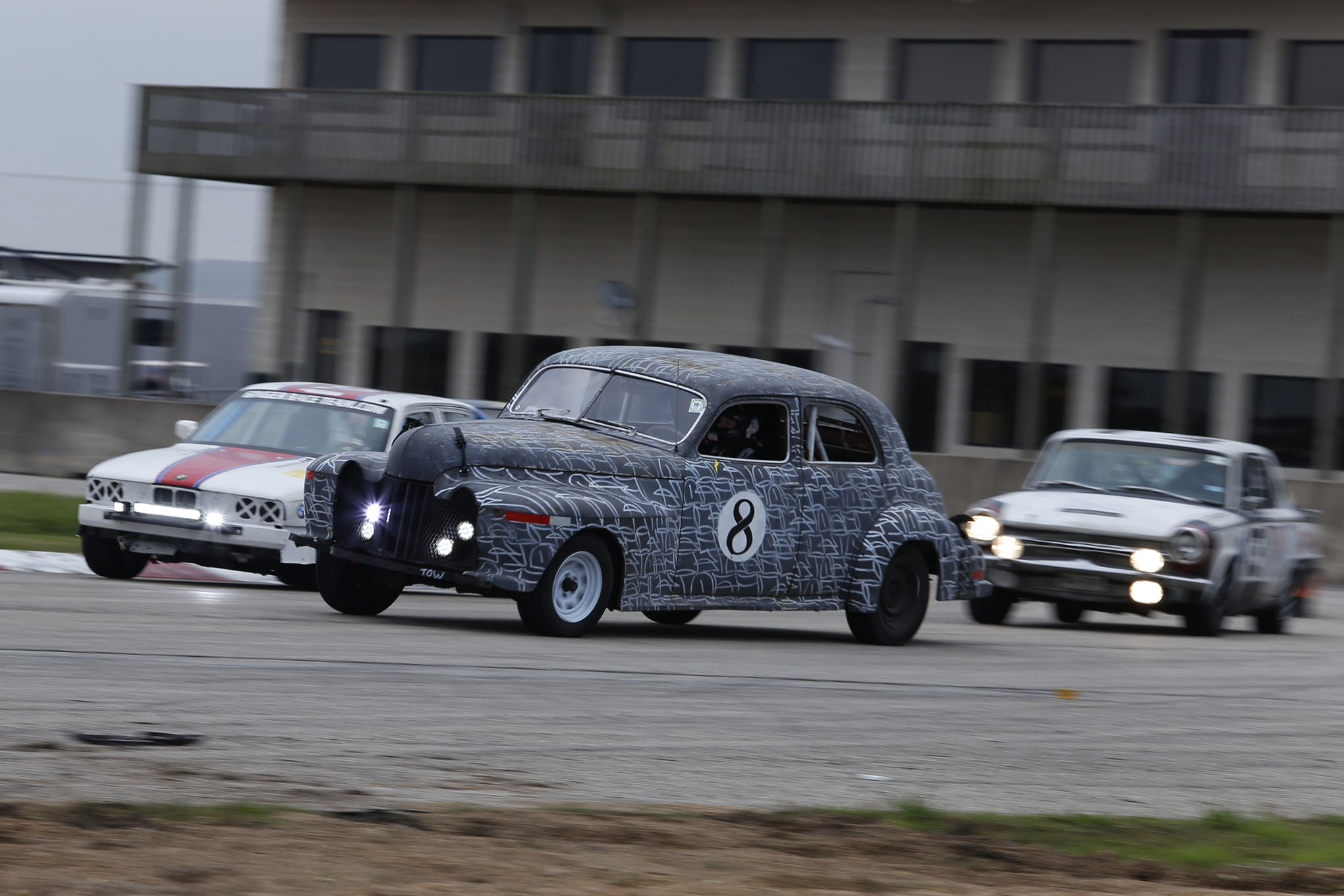
Hella Sweet Lemons Car of the Week: Escape Velocity Racing 1941 Oldsmobile 98
There has been some debate about what 24 Hours of Lemons car is the absolute oldest in the series. Some say it’s the Model T GT, which is alleged to be a 1927 Ford Model T (but is really a Fox Mustang with a Model T cowl and part of a Model A body). There’s the 1952 Willys Aero-Lark, the 1950 Mercedes-Benz 170S, the 1949 Nash Airflyte, and a few more 1950s machines, but today’s Hella Sweet Lemons Car of the Week beats them all: an Oldsmobile that was 77 years old when it won the Index of Effluency at the 2018 Stuntin’ & Splodin’ Soiree at MSR Houston.

The ’41 Olds sedan was a serious luxury machine in its day, with a mighty 110-horsepower straight-8 engine and four-speed automatic transmission.

Escape Velocity Racing, so named because some of its members work for NASA, has been campaigning a 1964 Dodge Dart in the 24 Hours of Lemons since 2013, and they’d decided that a pushbutton-automatic-shifted, Slant-6-powered, half-century-plus-old econobox just wasn’t enough challenge. They went right out and found a very rough (but complete and original) 1941 Olds for cheap. As an added bonus, their new race car came with a paint job by German conceptual artist, Stohead.

We have had a few flathead straight-six engines in our series, but this is the first straight-eight. Yes, those are 70-year-old plug wires— the team barely touched any of the running gear prior to the race.
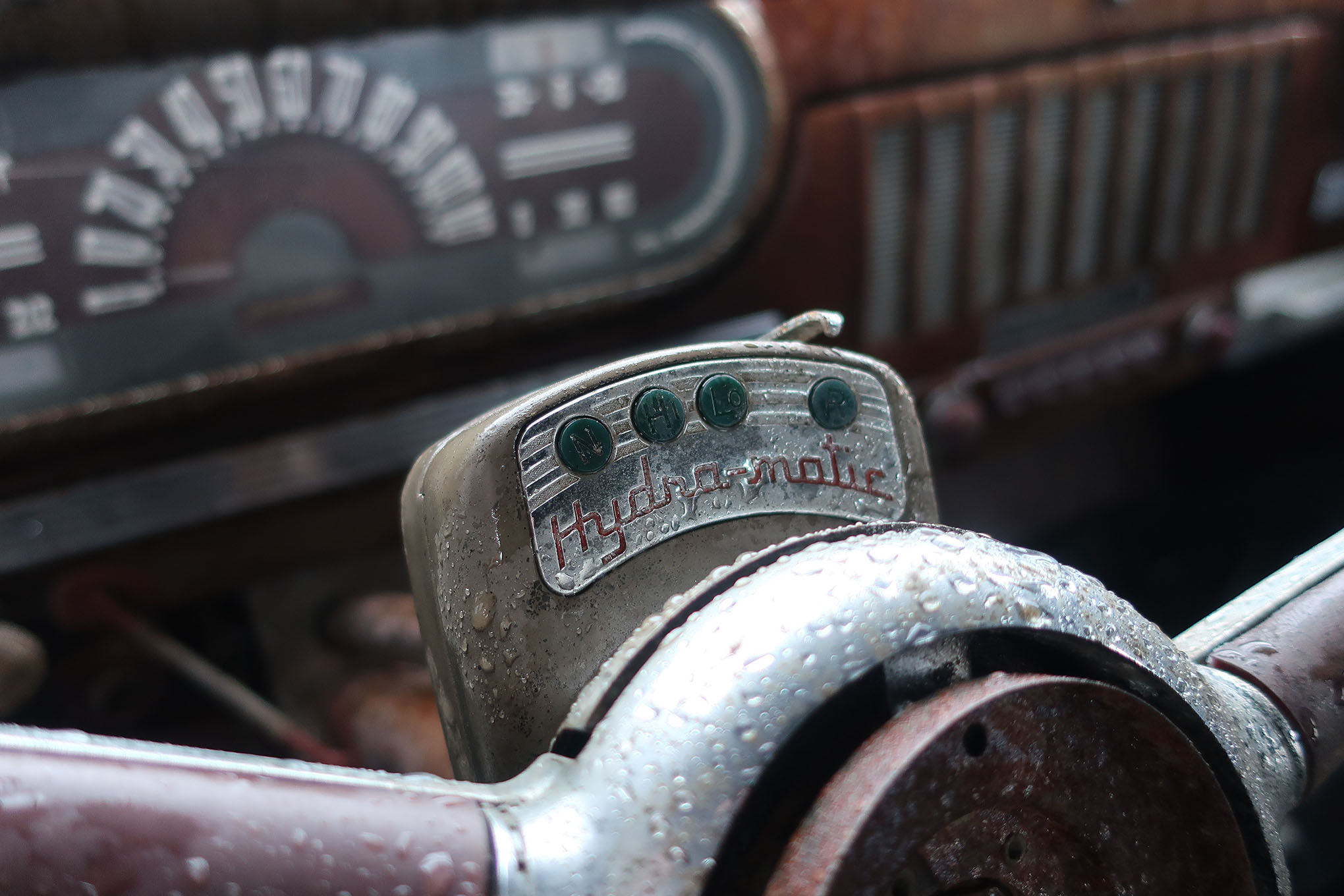
The transmission is another interesting piece of American automotive history: a genuine first-generation Hydra-Matic, ancestor to a family of transmissions still being made today. The original 4-speed Hydra-Matic was truly revolutionary, and GM led the world in automatic transmissions for decades after it. Amazingly, the Hydra-Matic in the Escape Velocity Olds still worked, though not as smoothly as it had in 1941.
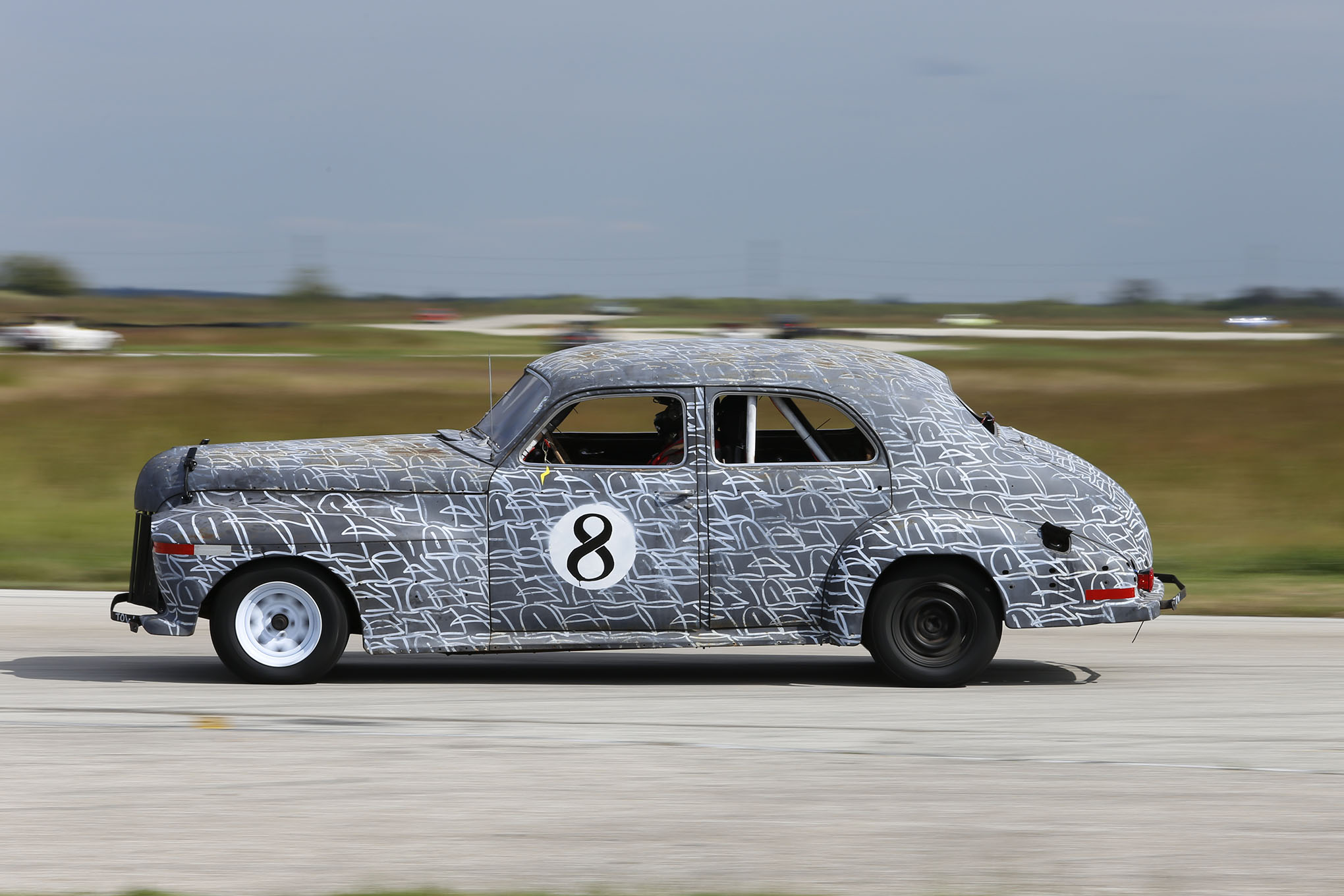
The team gutted the interior, added the required safety equipment, changed the spark plugs, patched a hole in the radiator, and that was just about it. The original-equipment lever shocks were completely shot, so the car bounced hilariously on the track, but it ran with few problems for nearly all of a grueling 24-straight-hour race.

Even the original steering wheel, crumbling Bakelite and all, stayed in the car.
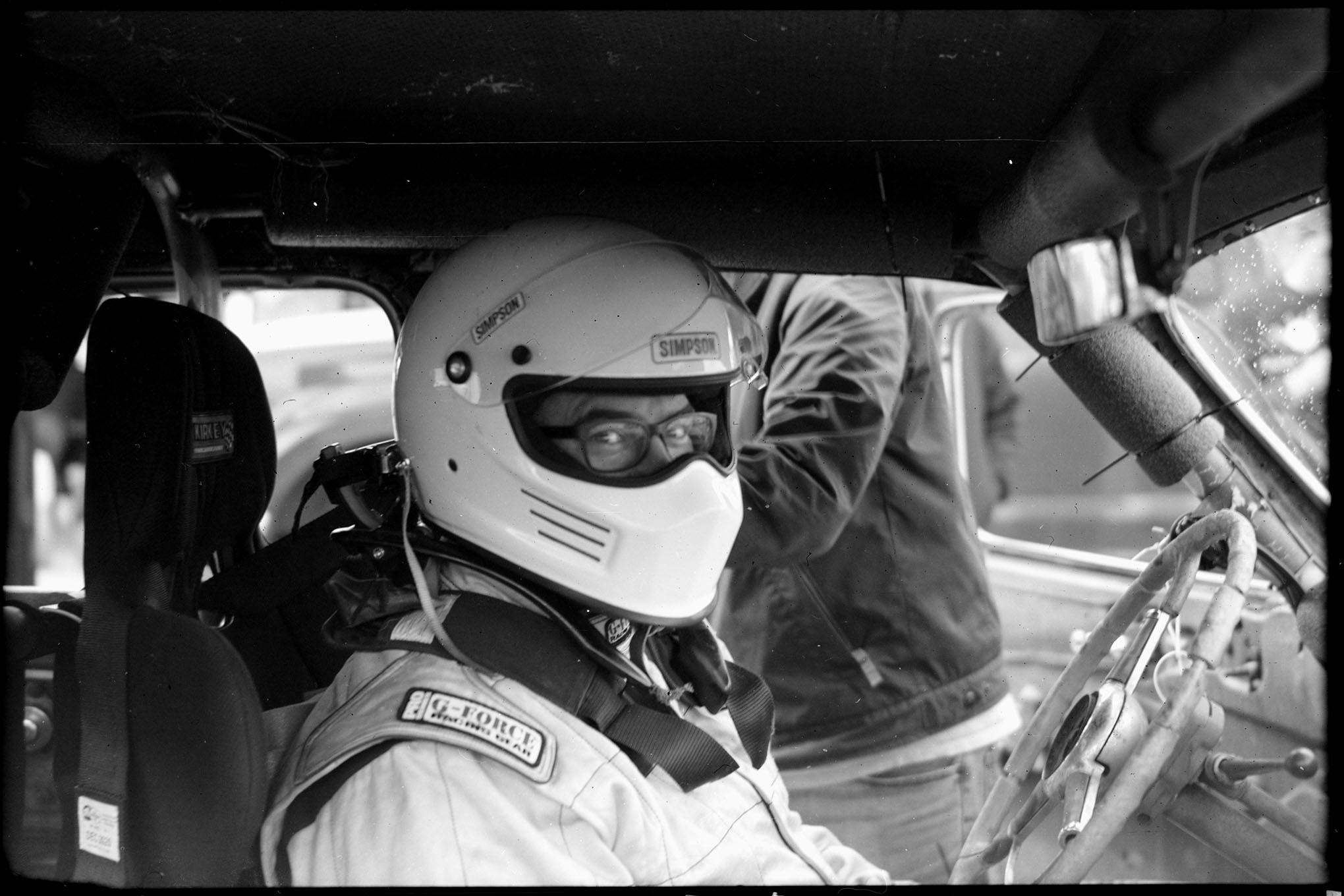
The car was something of a handful to drive, but Escape Velocity added some all-star arrive-and-drives from around the country, including members of Tetanus Racing and Ran When Parked Racing. Anton Lovett of Tetanus has raced in more 24 Hours of Lemons events than anyone on the planet (and even got married at a Lemons race), and he had this to say about his ’41 Olds racing experience:
Lemme tell you about this car: Original straight-eight flathead engine featuring 7:1 compression and 110HP (gross) when new. A little leaky around its front crank ROPE seal (surely dried up by now) and converted to a 1-wire 12v alternator with a Frank-fabbed and Anton-modded bracket. It was down to about 6 3/8 cylinders by the end, you could hear air being forced past burned/tight valves at idle and it kept getting softer and softer, but an amazing performance from an engine that had an oil change and fresh plugs, and NOTHING ELSE. 70-odd year old plug wires, stock untouched distributor, a total time capsule. Coupled to that was an example of GM’s early Hydra-Matic FOUR speed fluid-coupling automatic. To quote the Simpsons: “Put it in H!” Which is actually true in this case. Pre-PRNDL shift pattern: N (for starting), H(i), L(o), R. Floor/firewall-mounted starter pedal where the driver engages the Bendix gear with the first 3/4 of the pedal travel then makes contact with a big uninsulated copper contact that actually energizes the starter. Worked flawlessly all weekend. Single-circuit four-wheel drum brakes that did get fresh wheel cylinders and shoes and soft lines, along with a lesson in adjusting drum brakes. They were… mediocre. But it turns out to be just as well they weren’t more effective, as the suspension is much much worse. Coils all round, Knee-action SLA front suspension with a tiny sway bar featuring rotten end-links for zero anti-roll effect, ONE slightly working shock, and virtually no damping in any direction. Rear suspension consists of trailing links and a panhard bar, all padded with crumbling rubber bushings. And lever-action shocks that hadn’t seen damping since the Eisenhower administration. Back to the brakes- if you got on them too suddenly, the axle would climb up on the trailing arms and completely unload, clapping down and repeating in an orgy of axle tramp and unhinged wallowing. This often would convince the transmission to spontaneously downshift, adding to the mayhem until you moved the shifter BETWEEN N and H, prompting an upshift back to top gear. So you’re being assaulted by sensory input (not to mention the 30 inch crumbling Bakelite- rimmed steering wheel) where the car is corkscrewing around the one shock/stictiony wheel, roaring out unwanted downshifts, has a tiny little throttle peg poking out of the floor that you have to push straight down, is unstable in every axis…
Brilliant.
Completed 650 miles, beat on as dutifully as possible by a bunch of drivers proving the old adage that a GM car will run poorly longer than many will run at all… Mega thanks to the exhausted build team of Frank and Bob for building a solid cage and seat base, and having the perfect IOE sense of what to leave alone. Strong work, gents.
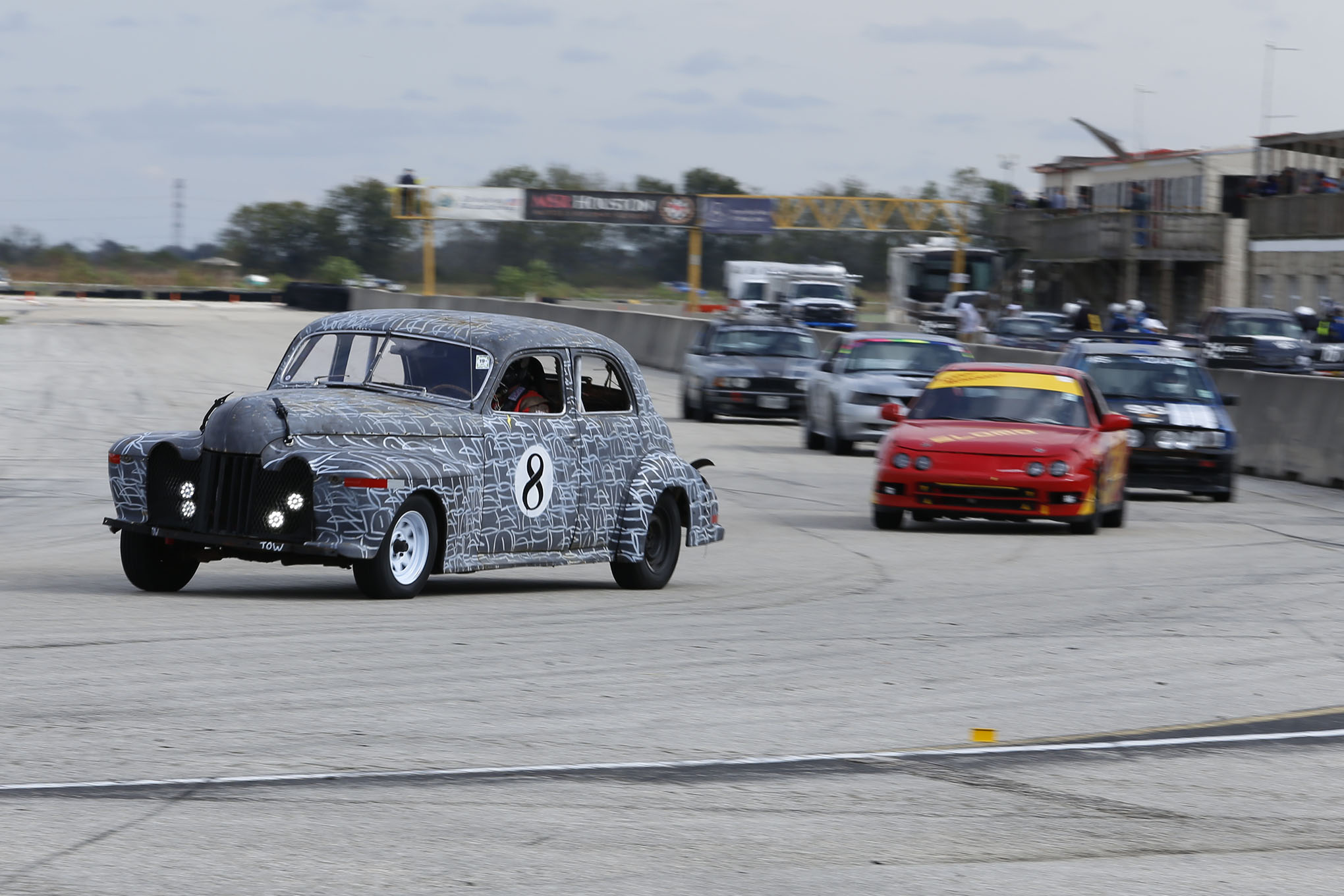
It wasn’t quick— all right, fine, it was the slowest car on the track (though it did manage to chase down and pass the ’66 Ford Fairlane)— but it survived 607 brutal, bouncy race miles during the course of the Stuntin’ & Splodin’ Soireee.
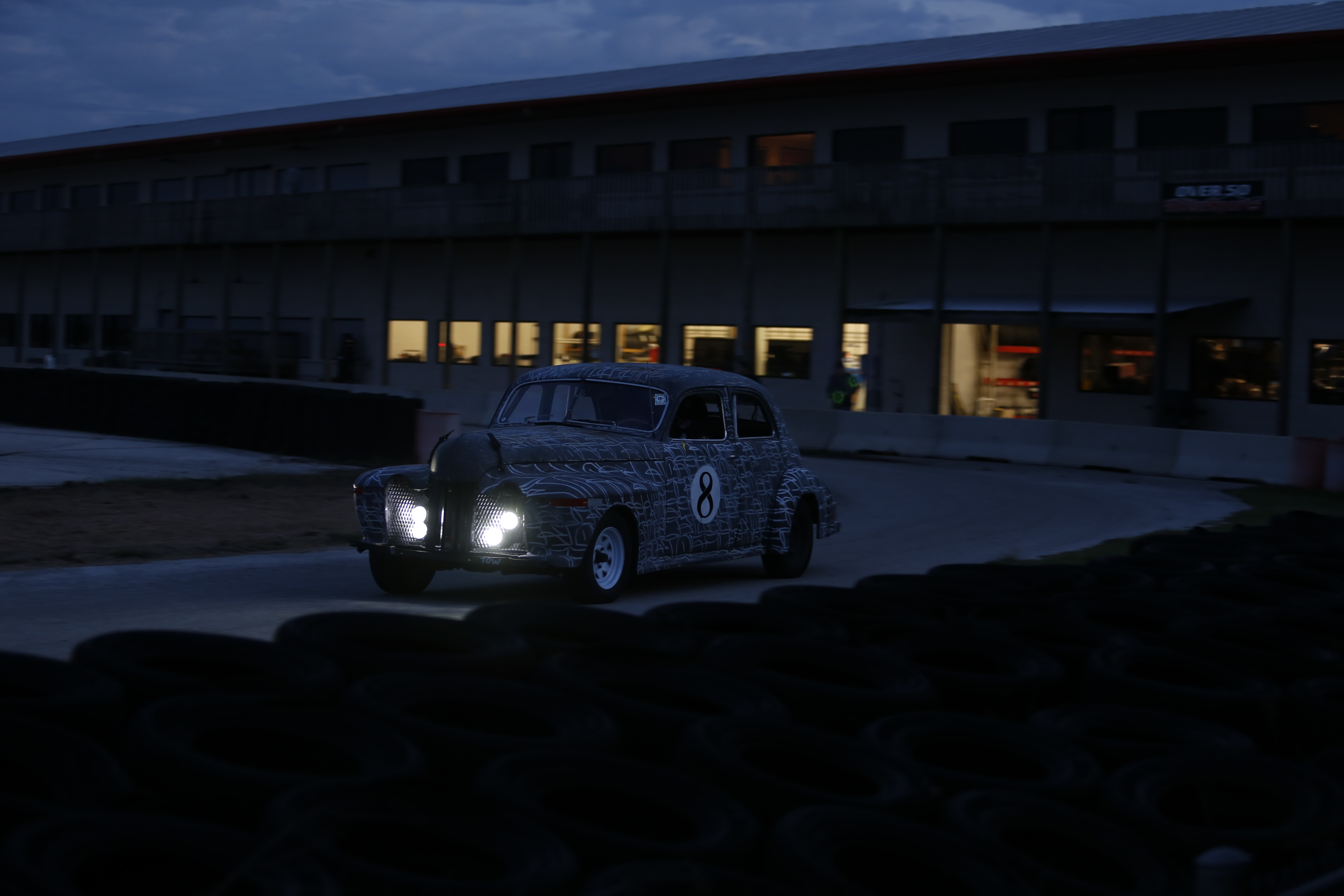
That was a good enough performance to beat 33 of the 117 entrants, including 7 BMWs, a Mustang, a Porsche, a Supra, and an RX-7.
The Escape Velocity Olds will be back, perhaps with a slightly more modern engine, in 2019. See you there!
